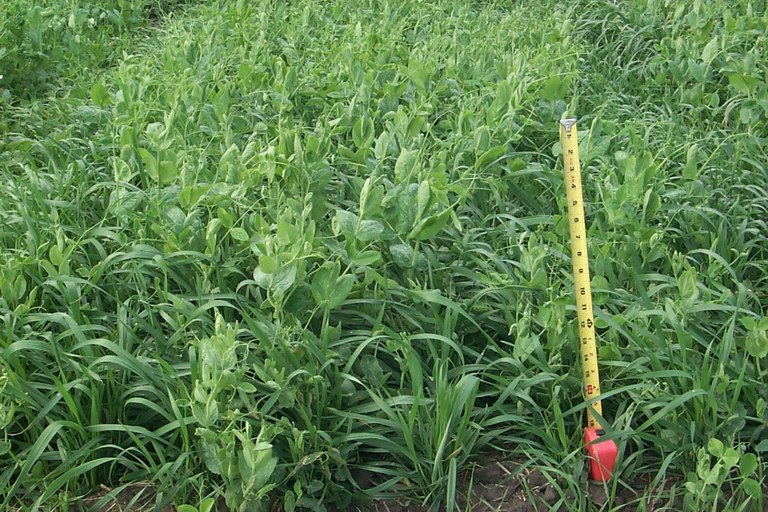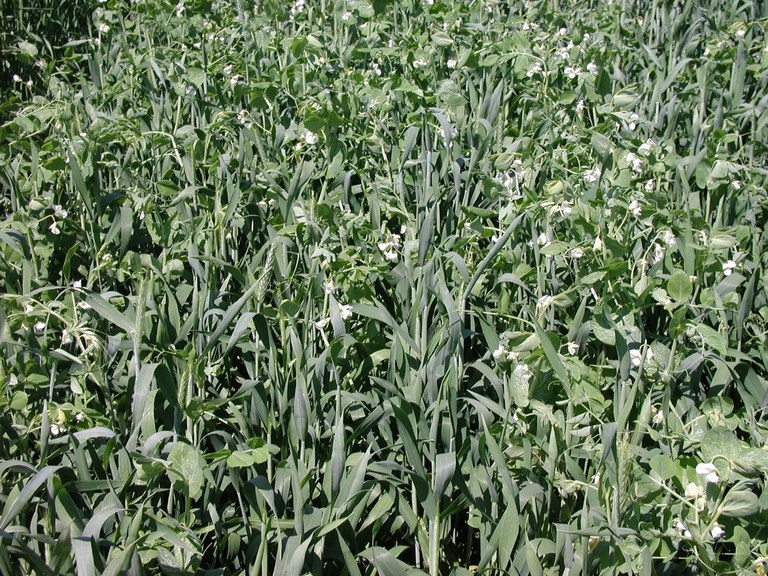Growing Grasses and Legumes Together
One possible method to reduce nitrogen requirements is to grow a legume in combination with a grass, otherwise referred to as multiple cropping. These two plant types grow well together and can complement each other in forage and other production systems.

Triticale and pea in early vegetative stage at the CREC.
Field trials were conducted at the CREC during the 2008-2011 growing seasons to compare multiple cropping of cereal/pea forage to monocultures of cereal and forage pea. Spring cereals used in these trials were barley, oats, and triticale. Varieties of oats and triticale used varied throughout the years of study. Varieties used in the trials were: Arvika forage pea, Haybet forage barley, Morton or Paul grain oats, TriCal 2700 or 141 forage triticale. The trials were planted in early May of each year in fields that tested low (average 30 lb. /ac) in available nitrogen. No additional fertilizer was used to grow the forage treatments. Cultural methods including tillage, seeding date and rate were used for weed control, with no herbicides used. Seeding rates used were 1 million pure live seeds/ac for the monoculture cereal treatments, with the sole forage pea sown at 300,000 PLS/ac. When grown in mixtures the cereals were sown at 800,000 PLS/ac and forage peas at 200,000 PLS/ac. All pea treatments were inoculated with rhizobia to aid in N fixation. Forage treatments harvest dates were determined by the growth stage of the forage. Triticale was harvested first when the plant was in the anthesis stage, followed by the barley which was harvested in the soft dough stage, and oats in the early milk stage. Forage peas were harvested approximately 7 days after flowering.
Data gathered (table 1) from these trials indicate that growing cereals in combination with peas will have a positive impact on both yield and quality in forage production. Adding peas to any one of the spring cereals increased yield when compared to the sole planting of the cereal forage. Forage quality was also impacted by the addition of peas to the cereal forage crops. Crude protein of the cereal/pea mixes were raised on the average by 3% or more when compared to the sole cereal treatments. Overall, the greatest impact from adding peas to cereals appears to be on forage quality when compared to cereals planted alone, indicating multiple cropping with peas may contribute to the overall soil N bank.

Triticale in late boot stage with peas blooming.
Steve Zwinger
Agronomy Research Specialist


